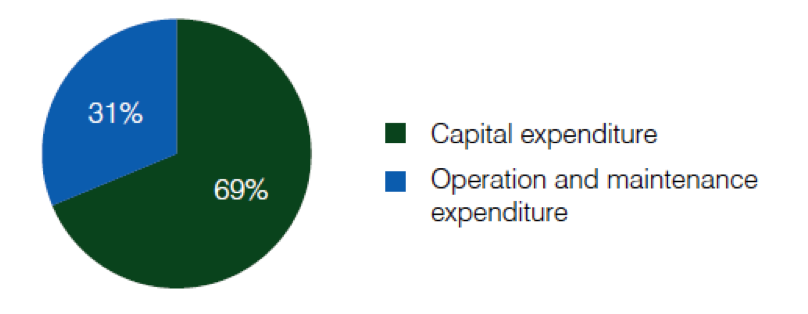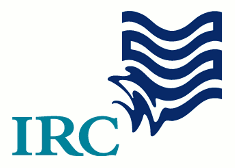Difference between revisions of "Capital Expenditure (CapEx)"
(→Examples) |
|||
| Line 29: | Line 29: | ||
'''Figure 2 Capital expenditure versus operational and maintenance expenditure''' | '''Figure 2 Capital expenditure versus operational and maintenance expenditure''' | ||
[[Image:CapEx_OM.png|thumb|center|600px|Source: WHO and UN-Water, 2012, 29]] | [[Image:CapEx_OM.png|thumb|center|600px|Source: WHO and UN-Water, 2012, 29]] | ||
| + | |||
| + | ====Capital expenditure water service delivery==== | ||
| + | Based on research from the <span id="anchor_name">WASHCost</span> project, Capital Expenditure (CapEx) to provide a basic level of water service with a borehole and handpump (at 2011 prices) range from US$ 20 per person to just over US$ 60 per person (see figure 3). For small schemes, including mechanised boreholes and piped supplies, the costs range from US$ 30 to just over US$ 130 per person. For intermediate and larger schemes benchmark capital costs vary widely from US$ 20 to US$ 152 per person. | ||
==Key Documents== | ==Key Documents== | ||
| Line 34: | Line 37: | ||
==Links== | ==Links== | ||
| − | + | * WASHCost was five-year action research programme, running from 2008 to 2012. The WASHCost team gathered information related to the costs of providing water, sanitation, and hygiene services for an entire life-cycle of a service - from implementation all the way to post-construction. The WASHCost programme was led by IRC International Water and Sanitation Centre with several partners to collect data in the rural and peri-urban areas of Burkina Faso, Ghana, India, and Mozambique. For more information see http://www.washcost.info/ | |
==Acknowledgements== | ==Acknowledgements== | ||
Revision as of 03:28, 12 December 2012
|
Capital Expenditure is the costs of providing a water or sanitation service to users where there was no service before; or of substantially increasing the level of services received by users. It includes the capital invested in first time construction or purchase of fixed assets such as concrete structures, wells, pumps, pipes or toilets prior to implementation of the service and to improve or expand existing water or sanitation systems. Costs for rehabilitation or replacement of major parts of a water or sanitation system, such as replacing a pump, are considered expenditure on capital maintenance (CapManEx). Capital expenditure (CapEx) consists of expenses on hardware and software (see figure 1). Capital expenditure hardware (CapEx hrd) includes expenditure on fixed assets as pumps, pipes, etc. and required equipment such as vehicles or offices to support the construction of water and sanitation systems prior to implementation of the service. Capital Expenditure software (CapEx Sft) includes the costs of one-off work with stakeholders prior to construction or implementation or extension of the service such as one-off training of pump mechanics or caretakers, community mobilisation or hygiene education.
Source: Smits et.al, 2011, 7.
ContentsExamplesAccording to the 2012 GLAAS report (WHO and UN-Water, 2012, 29), 69% of funds for water and sanitation expended in 11 respondent countries were directed towards Capital Expenditure (see figure 2). Figure 2 Capital expenditure versus operational and maintenance expenditure Capital expenditure water service deliveryBased on research from the WASHCost project, Capital Expenditure (CapEx) to provide a basic level of water service with a borehole and handpump (at 2011 prices) range from US$ 20 per person to just over US$ 60 per person (see figure 3). For small schemes, including mechanised boreholes and piped supplies, the costs range from US$ 30 to just over US$ 130 per person. For intermediate and larger schemes benchmark capital costs vary widely from US$ 20 to US$ 152 per person. Key DocumentsSupporting documents, manuals. Links
AcknowledgementsPage credits. |
| ||||||||||||||||||||


